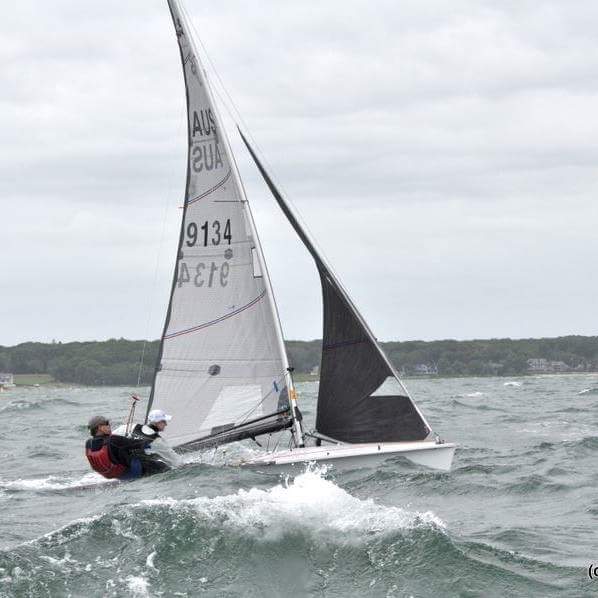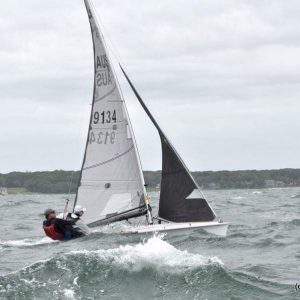

I have set out below a number of heavy air techniques that will help you sail more competitively. Success and speed in heavy air grows from a combination of the following ingredients.
Firstly you have to learn to love it.
Secondly, you must prepare your boat so that nothing will break.
And lastly, be prepared to practice and train in heavy air. When you do race in those conditions, you will instinctively respond to situations as they arise.
The list is by no means complete but will at least give you a start to get faster out on the race course.
Upwind – Jib Settings
Use your jib to power the boat and use the main to keep the boat flat. Move the jib leads aft to flatten the foot and open the leech. By keeping the headstay tight with the rig and backstay tension, you will flatten the jib.
Moving the lead outboard will open the slot which although fast may hurt pointing.
In big waves or puffs, when the boat becomes difficult to steer, easing the jib will reduce the load on the helm, otherwise keeping the jib sheet tight is fast.
Upwind – Main Settings
The mainsail should be flat with an open leech. Flatness is achieved by tightening the outhaul which flattens the lower sections. Pulling on the Cunningham moves the draft forward and opens the upper leech.
Flatten the mainsail by inducing a lower mast bend which also widens the slot. This means that you don’t need to move the jib leads outboard as much.
Pulling on the backstay (if you have one) flattens the upper part of the mainsail and opens the upper part of the leech.
Set the vang tight so that the boom does not raise when the sheet is eased to balance the boat.
Keep the boat flat
When a puff hits and the boat starts to heel, play the mainsheet to keep the boat flat and head up slightly. Once the boat is flat, hike hard, drive off slightly and trim in hard.
As the forces on the board or keel, rudder and sails begin to build up again, ease the sheet and repeat.
Steering
In many classes and boats, the crew is handed that mainsheet to play leaving the helmsperson free to steer to the conditions.
The worst thing in heavy air is to lose your speed, crashing into a wave or letting the boat heel over. Steering accurately is critical as is your ability to concentrate for the whole race.
As you approach a wave that you think may slow you down, try to see what is behind it. Bear off slightly to keep your speed and momentum dependent on the wave sets that you see.
Tacking
Never tack when the boat is heeled, even slightly and make sure you are travelling at full speed as you instigate the tack.
Always look to weather, pick a smooth spot and make sure everyone has their sails un-cleated before you call “tacking”.
It’s always fastest to have the boat flat or even slightly heeled to weather after coming out of the tack. This can be controlled by mainsheet tension and crew weight placement. The first few seconds after the tack are critical.
Downwind
Prior to rounding the weather mark, the vang will have been eased substantially from the upwind setting. If the boat feels overpowered ease the vang further and if underpowered sneak a little more on.
Riding waves fast in heavy air is what many of us look forward to when the breeze is on. To catch waves effectively you need to keep the boat flat and continually play the sails.


